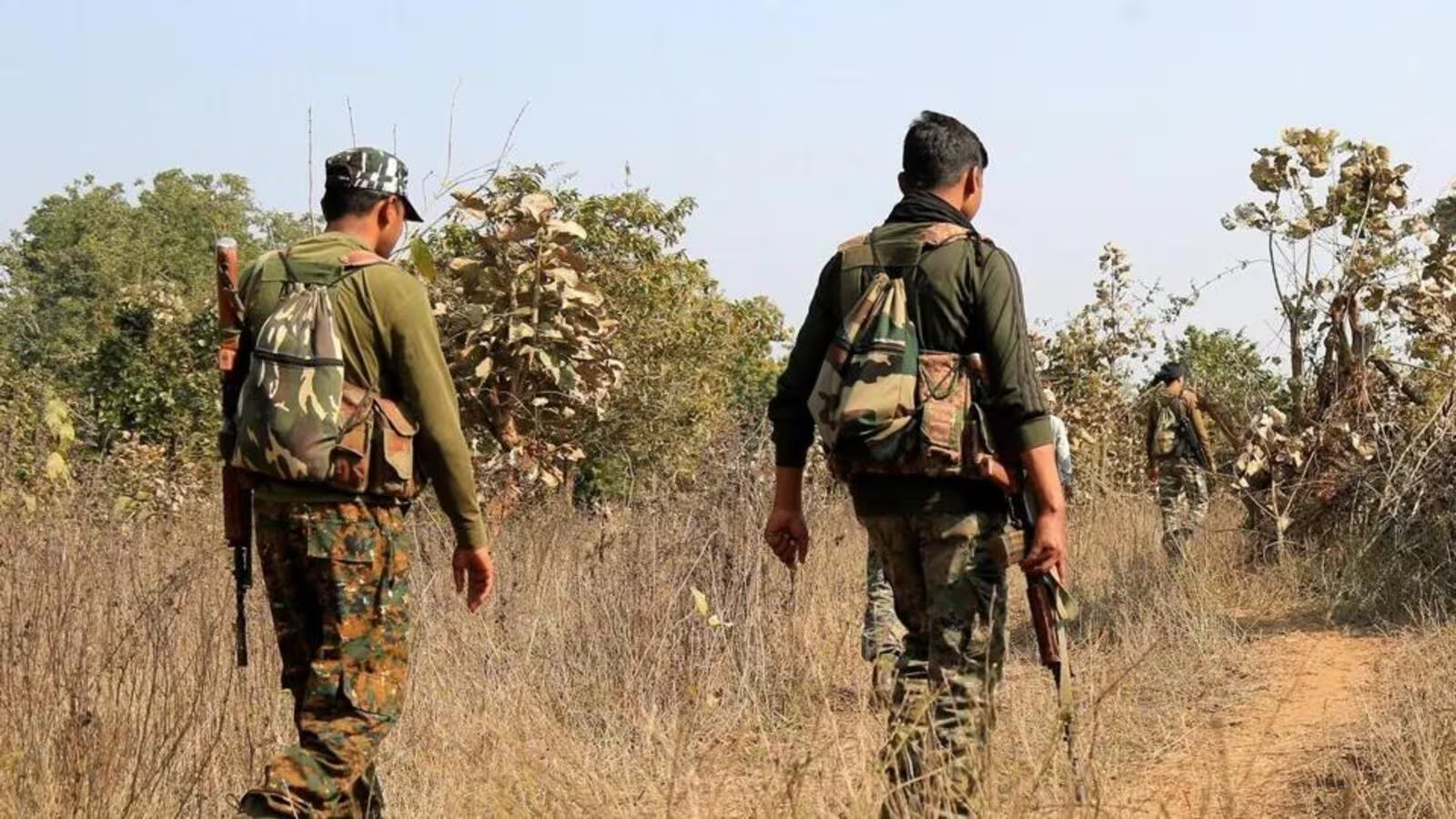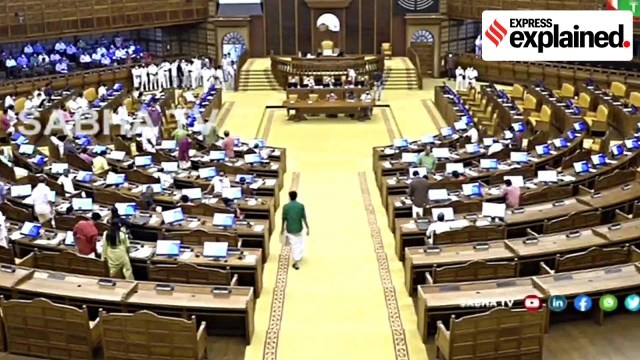Description

Disclaimer: Copyright infringement not intended.
Context:
- At least 29 Maoists were killed in a gunfight with security forces in the forests of Kanker district, Chhattisgarh.
Significance of the Operation
- The operation marks a breakthrough as it allowed security forces to enter Abujhmad, an area that has been a Maoist stronghold for over three decades.
- It resulted in the near elimination of the Maoists' Partapur area committee, known for carrying out deadly attacks.
Description of Abujhmad
- Abujhmad, spanning about 4,000 sq km, is a dense forest region in southern Chhattisgarh, with challenging terrain and limited government presence.
- It serves as a crucial transit corridor for Maoists between several states, making it strategically significant.
Some significant past anti-Maoist operations in India:
- Operation Green Hunt (2009-2010): A large-scale offensive launched by Indian security forces against Maoist insurgents, primarily in the states of Chhattisgarh, Jharkhand, Odisha, and Maharashtra.
- Operation Anaconda (2010): A joint operation conducted by Indian security forces in the Saranda forest area of Jharkhand, aimed at flushing out Maoist insurgents from their hideouts.
- Operation Hakka (2011): An anti-Maoist operation carried out by security forces in the Abujhmad region of Chhattisgarh, targeting Maoist strongholds and infrastructure.
- Operation Thunder (2013): A series of coordinated operations launched by security forces in the Bastar region of Chhattisgarh to disrupt Maoist activities and dismantle their networks.
- Operation Prahaar (2017): A major offensive by Indian security forces against Maoist insurgents in the Sukma district of Chhattisgarh, resulting in several casualties on both sides.
- Operation Samadhan (2017-present): A long-term counter-insurgency strategy adopted by the Indian government to address the Maoist threat, involving a combination of military operations, development initiatives, and efforts to win hearts and minds in affected communities.
- Operation Prahar (2018): A large-scale offensive launched by security forces in the Bastar region of Chhattisgarh, aimed at flushing out Maoist insurgents from their strongholds and disrupting their activities.
- Operation Basalt (2019): An anti-Maoist operation conducted by security forces in the Bijapur district of Chhattisgarh, resulting in the neutralization of several Maoist leaders and cadres.
- Operation Hill Vijay (2020): A joint operation by Indian security forces in the dense forests of Jharkhand, aimed at flushing out Maoist insurgents and establishing government control in the region.
- Operation Rang (2021): An anti-Maoist operation carried out by security forces in the Gadchiroli district of Maharashtra, resulting in the arrest of several Maoist leaders and cadres.

Challenges to tackle Maoist problem in India
- Geographical Challenges: The Maoist insurgency predominantly operates in remote and densely forested regions like the Bastar district in Chhattisgarh, making it difficult for security forces to conduct effective operations due to the rugged terrain, lack of infrastructure, and vast expanses of uninhabited wilderness.
- Socio-Economic Grievances: Maoists exploit socio-economic disparities and grievances prevalent among marginalized communities, including tribal populations and landless laborers. These communities often feel neglected by the government, lacking access to basic services like healthcare, education, and employment opportunities, which fuels resentment and provides fertile ground for Maoist recruitment and support.
- Development Deficits: Many Maoist-affected areas suffer from chronic underdevelopment and poor governance, exacerbating socio-economic grievances and fostering a sense of alienation from mainstream society. The absence of adequate infrastructure, such as roads, electricity, and communication networks, further isolates these regions and impedes the delivery of essential services, perpetuating cycles of poverty and discontent.
- Logistical and Intelligence Constraints: Conducting anti-Maoist operations requires extensive logistical support and accurate intelligence, both of which are challenging to obtain in remote and hostile environments. Limited road connectivity, difficult terrain, and the vastness of affected areas hinder the mobility and coordination of security forces, while the clandestine nature of Maoist operations complicates efforts to gather actionable intelligence and anticipate their movements.
- Human Rights Concerns: The counterinsurgency efforts against Maoists have been marred by allegations of human rights violations, including extrajudicial killings, arbitrary arrests, and excessive use of force by security forces. Instances of collateral damage and civilian casualties during anti-Maoist operations have further strained relations between security forces and local communities, eroding trust in the government and fueling resentment towards state authorities.
Way ahead to tackle the Maoist problem in India:
- Integrated Development Initiatives: Implement comprehensive development programs focusing on socio-economic upliftment in Maoist-affected regions. These initiatives should prioritize infrastructure development, such as roads, schools, healthcare facilities, and electricity, to address long-standing grievances and improve living standards.
- Enhanced Security Measures: Strengthen intelligence gathering, coordination between security forces, and deployment of specialized units trained in counterinsurgency tactics. Focus on targeted operations to dismantle Maoist infrastructure, disrupt their supply lines, and neutralize key leaders while minimizing collateral damage and civilian casualties.
- Community Engagement and Outreach: Foster trust and cooperation with local communities through proactive engagement, dialogue, and participatory decision-making processes. Empower community leaders, civil society organizations, and local governments to address grievances, resolve conflicts, and prevent radicalization by promoting inclusive development and social cohesion.
- Legal and Judicial Reforms: Ensure accountability and transparency in law enforcement operations by strengthening mechanisms for oversight, investigation, and prosecution of human rights violations. Uphold the rule of law, respect for human rights, and due process rights for all individuals, including suspects and detainees, to build public confidence in state institutions and the justice system.
- Regional Cooperation and Diplomacy: Foster cooperation with neighboring states and international partners to address cross-border issues, such as arms smuggling, funding, and ideological support for Maoist insurgency. Engage in multilateral forums, intelligence sharing, and capacity-building initiatives to enhance regional security and counter-radicalization efforts effectively.
Source
https://indianexpress.com/article/explained/anti-maoist-operations-9275484/
|
PRACTICE QUESTION
Q) Match the following terms related to the Maoist insurgency in India with their corresponding descriptions:
Terms:
A) Naxalbari Movement
B) Red Corridor
C) Salwa Judum
D) Operation Green Hunt
Descriptions:
1. A violent peasant uprising in 1967 that marked the beginning of the Maoist movement in India.
2. A term used to describe the geographical stretch in India where Maoist insurgents are active, spanning several states in central and eastern India.
3. A controversial government-backed militia movement formed in Chhattisgarh to counter Maoist insurgency, criticized for human rights abuses.
4. A large-scale anti-Maoist military operation launched by the Indian government in 2010 to combat Left-Wing Extremism in the Bastar region.
Options:
A) 1-D, 2-A, 3-B, 4-C
B) 1-A, 2-D, 3-C, 4-B
C) 1-D, 2-C, 3-B, 4-A
D) 1-B, 2-A, 3-C, 4-D
Answer:
B) 1-A, 2-D, 3-C, 4-B
|










